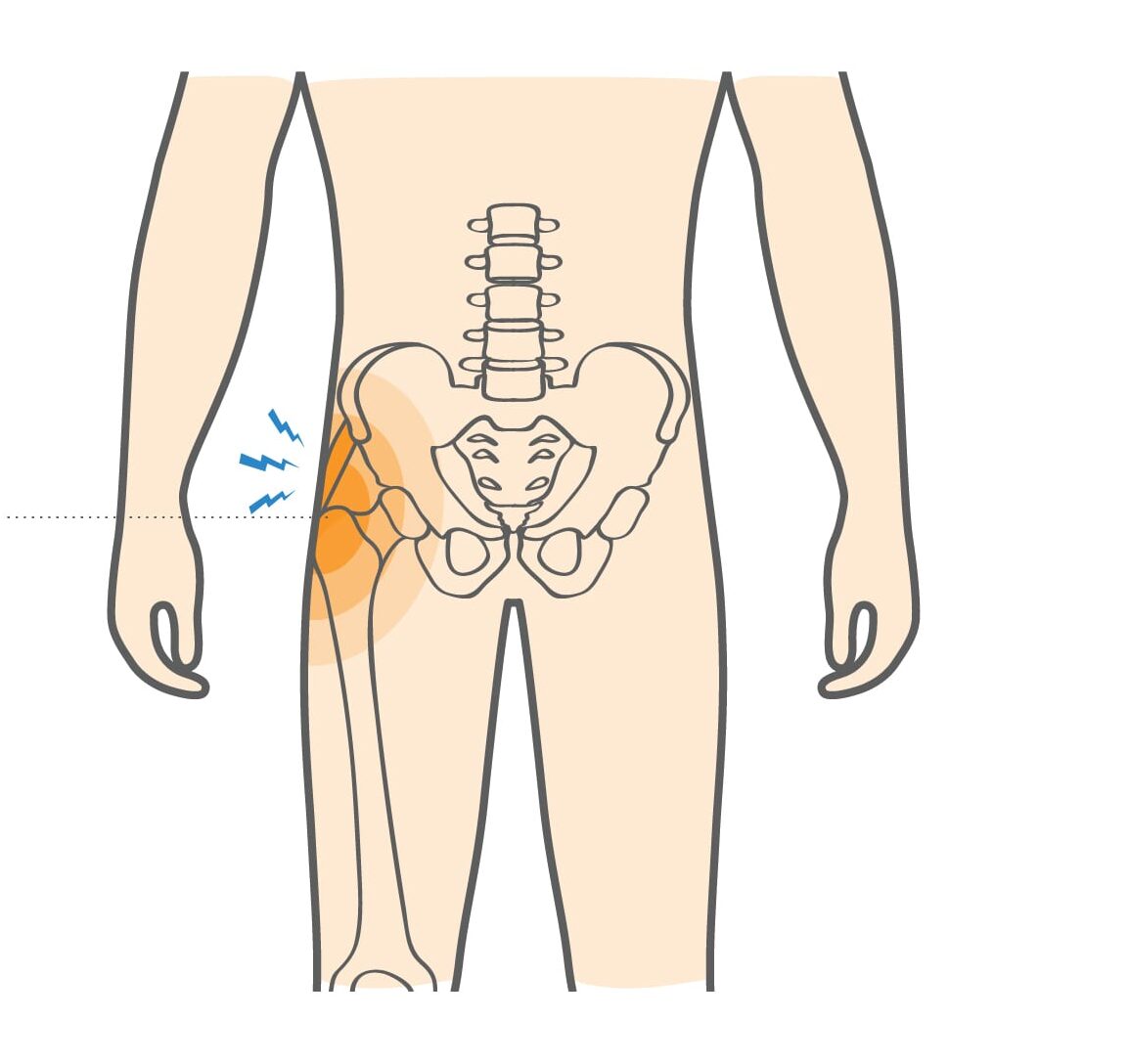A common source of lateral hip pain, trochanteric bursitis, is inflammation of the bursae (fluid-filled sacs that serve as cushions between the bones, tendons, and muscles) on the outside of the hip. A band of tissue called the iliotibial band runs outside the hip to the knee. When this band gets tight, often due to overuse, it can rub against the bone, irritating the bursae. This condition is common in runners and easily treatable.
Trochanteric Bursitis Causes, Symptoms & Treatment Options
A common source of lateral hip pain, trochanteric bursitis, is inflammation of the bursae (fluid-filled sacs that serve as cushions between the bones, tendons, and muscles) on the outside of the hip. A band of tissue called the iliotibial band runs outside the hip to the knee. When this band gets tight, often due to overuse, it can rub against the bone, irritating the bursae. This condition is common in runners and easily treatable.
Overview
Overview

What causes Trochanteric Bursitis?
Trochanteric bursitis is caused by overuse or injury of the hip. Walkers and runners, especially women who are middle-aged or older, are at greater risk. Other causes and risk factors include:
- An injury to the hip (e.g. due to a fall)
- Training errors, like overtraining or running the same course over and over
- Poor posture or a difference in leg length that places stress on the tissues around the hip
- Previous surgery on the hip
Activities frequently associated with hip bursitis include:
- Running
- Walking
- Cycling
Symptoms
Pain on the outside of your hip is the most common symptom of trochanteric bursitis. Other symptoms and characteristics of this condition include:
- Pain that initially is sharp but becomes dull over time
- Difficulty sleeping or lying on the side where you feel hip pain
- Increased outer thigh pain when climbing stairs or rising from a seated position
- Tenderness to the touch over the greater trochanter, pain
- In extreme cases, swelling and redness in the hip area
This lateral hip pain can interfere with daily activities and often worsens without intervention.
When to see a doctor
If your symptoms have not improved within two weeks with basic, at-home remedies such as rest and ice, you should see a doctor for evaluation and treatment. During your visit, your doctor will ask about your injury, the pain you are experiencing, and whether you have had prior injuries to your hip. Often, trochanteric bursitis is associated with a tight iliotibial band outside your hip. Your doctor will examine your hip where the bursae are located, looking for signs of tenderness or tightness, and may recommend an X-ray or other tests to help rule out other causes of outer thigh pain, such as arthritis or tendon tears.
Non-operative treatment
Most cases of hip bursitis respond well to conservative treatment. Common options include:
- Rest
- Ice
- Over-the-counter nonsteroidal anti-inflammatory (NSAID) medication like ibuprofen
- Corticosteroid injections into the bursae (or fluid-filled sacs around the hip joint) to reduce inflammation and pain
- Physical therapy
Try these hip bursitis exercises to help address your condition:
Below is a PDF of the Hip Bursitis Exercise Program
Surgical Treatment
Trochanteric bursitis is usually treated non-surgically. Surgery is rarely considered an option for this condition.
Recovery
With proper treatment, athletes with trochanteric bursitis can expect to resume play within weeks. Prevention is always the best treatment, and athletes should take steps to ensure their iliotibial band fully recovers to avoid this problem again. Preventive steps include:
- Training and performing these hip bursitis exercises is important to maintain strength and flexibility and avoid aggravating your hip.
- Using a shoe insert if your legs aren’t the same length

